A new exhibition called "Water in Hegyvidék - A Drop of History" opened on 1 June at the Hegyvidék Local History Collection. Mayor Zoltán Pokorni gave a greeting on the terrace of the Horse Railway Cultural and Event Centre, which was the home of the former Zugliget horse railway station. The exhibition was opened by historian Gergely Földváry, the head of the Hegyvidék Local History Collection, and dr Katalin Éder, the director of the Budapest History Museum - Castle Museum.
.jpg)
Opening of the exhibition: Mayor Zoltán Pokorni giving a greeting (Photo: hegyvidek.hu)
.jpg)
The title of the exhibition on the glass surface of the Hegyvidék Local History Collection building, and the building of the former Zugliget Horse Railway Terminal (Photo: hegyvidek.hu)
The temporary exhibition presents the relationship between Hegyvidék and the water from a number of different perspectives. According to Gergely Földváry's report, the subject of the exhibition came from the fact that he had a map in which he noticed that the 12th District was the only district in Buda that was not connected to the Danube, yet the Hegyvidék, rich in springs, has provided water to the Buda Castle since the Middle Ages. He stressed that water played an important role in the life of the district at all eras.
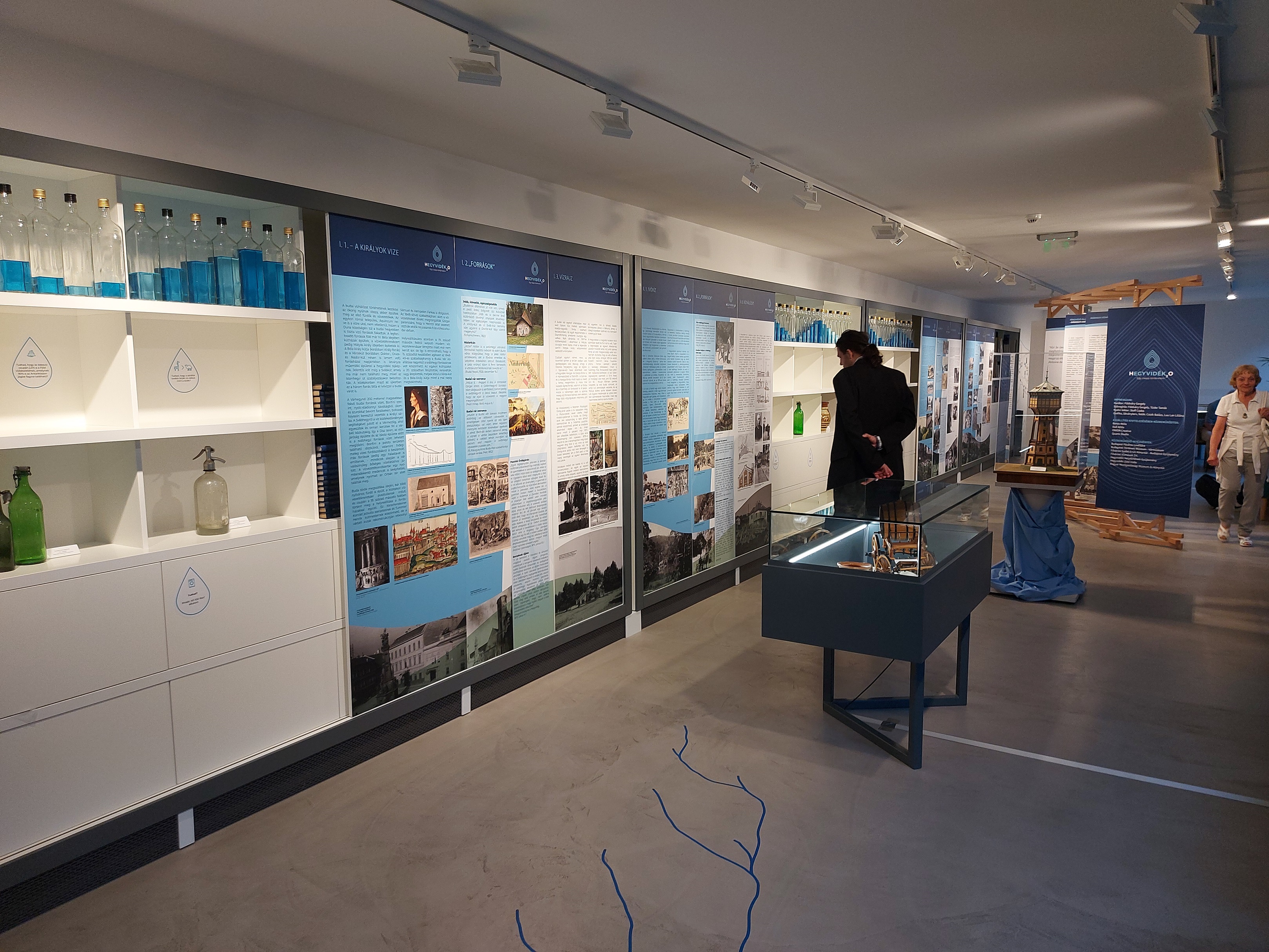
The past utilization of water appears on the panels according to different topics (Photo: hegyvidek.hu)
.jpg)
The curator of the exhibition, Gergely Földváry, showed the exhibition to Zoltán Pokorni, the mayor of the 12th District (Photo: hegyvidek.hu)
The exhibition wants to show that for how many things the water is needed, how important role it plays in all areas of our lives today, and has played in the past. The different themes on each panel shows the past utilization of water, from drinking water to the culture of bathing to hospitality.
It is now natural for water to flow from the tap, but until the mid-1800s water had to be brought from the Danube, as the needs of the developing city could no longer be fully met by local springs and wells. Water merchants, water carriers appeared, who brought water with donkeys and sold it for money.
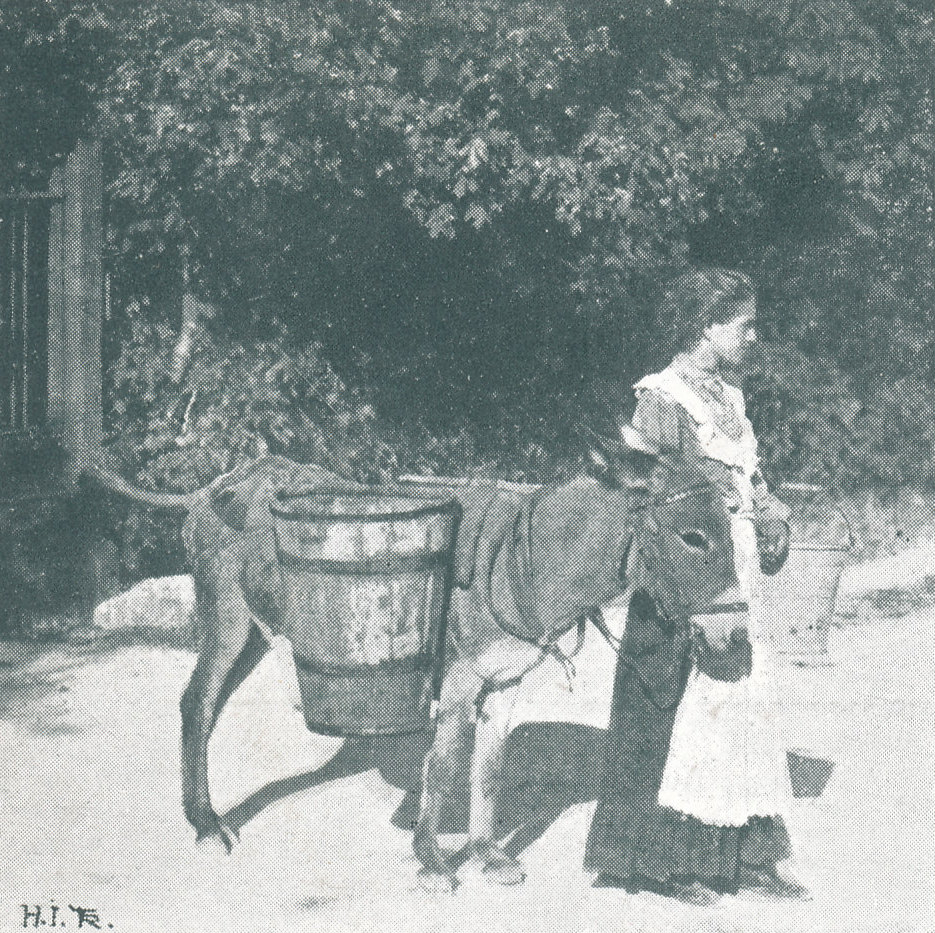
Water-carrier donkey in the Zugliget in the early 1900s (Photo: Hegyvidék Local History Collection)
It is interesting that Queen Elizabeth also loved the water of Svábhegy: "Queen Elizabeth drinks the water of Svábhegy, but this year there was cholera in the capital, so the water from the garden of Gödöllő was delivered to the majesty," the Budapesti Hírlap wrote on 11 November 1893.
It also turns out that Palatine Joseph also brought his drinking water from the town fountain in Svábhegy, which is why the Városkút (Town Fountain) was named Nádorkút (Palatine Fountain) in 1847.
The water supply of the Buda Castle was obtained from the water of the Hegyvidék wells already in the time of King Matthias, when the water of the springs was led to the Castle through clay and stone pipes. In addition to the three most important fountains - Városkút (Town Fountain), King Béla Fountain, Svábkút (Swabian Fountain) - there are many springs in the district, such as the Disznófő (Pig's Head) Spring and the Szarvas (Deer) Fountain.
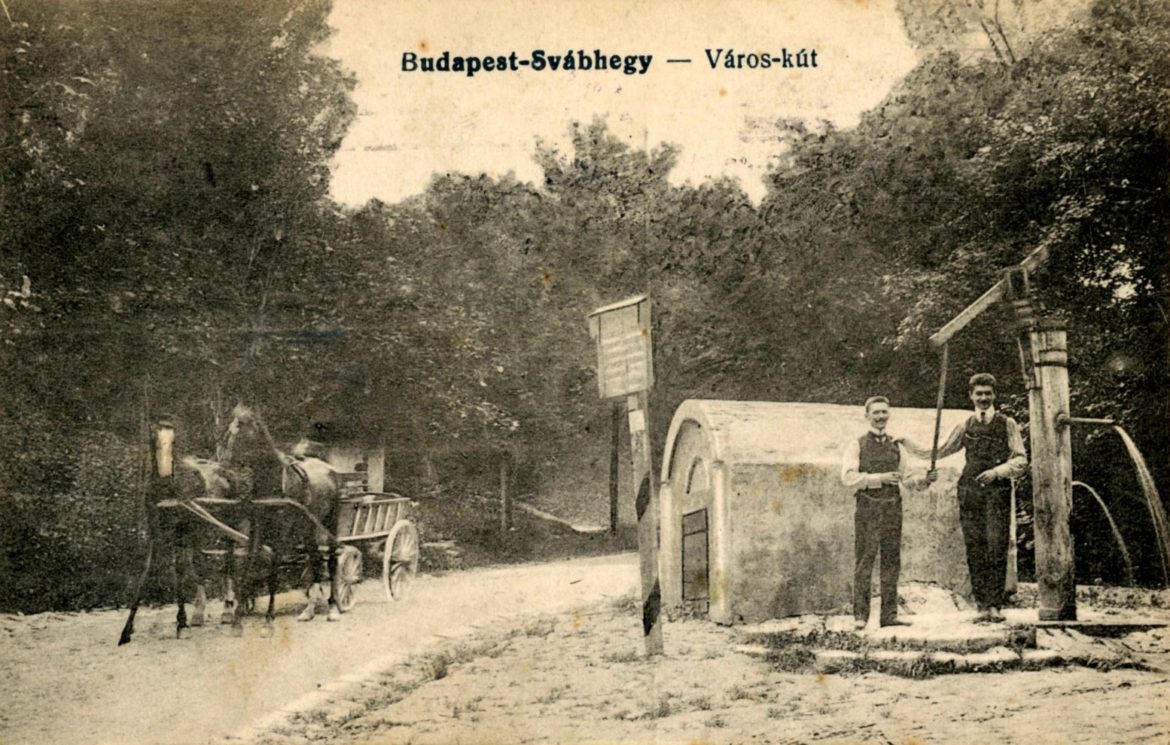
The Városkút (Town Fountain) in the 1880s on a contemporary postcard (Source: Hegyvidék Local History Collection)
On one of the panels, we read that during the War of Independence in 1848–49, the aqueduct was damaged by the soldiers on the command of General Görgei, so that the Austrian defenders would not have access to fresh water in the Buda Castle.
Jókai was happy when the aqueduct was built. In his Kertészgazdászati jegyzetek (Horticultural Notes) published in 1896, he put it this way: "Now that we have an aqueduct in the whole of Svábhegy, we can live like royalty: we will no longer watering from cisterns but they still do a very good service."
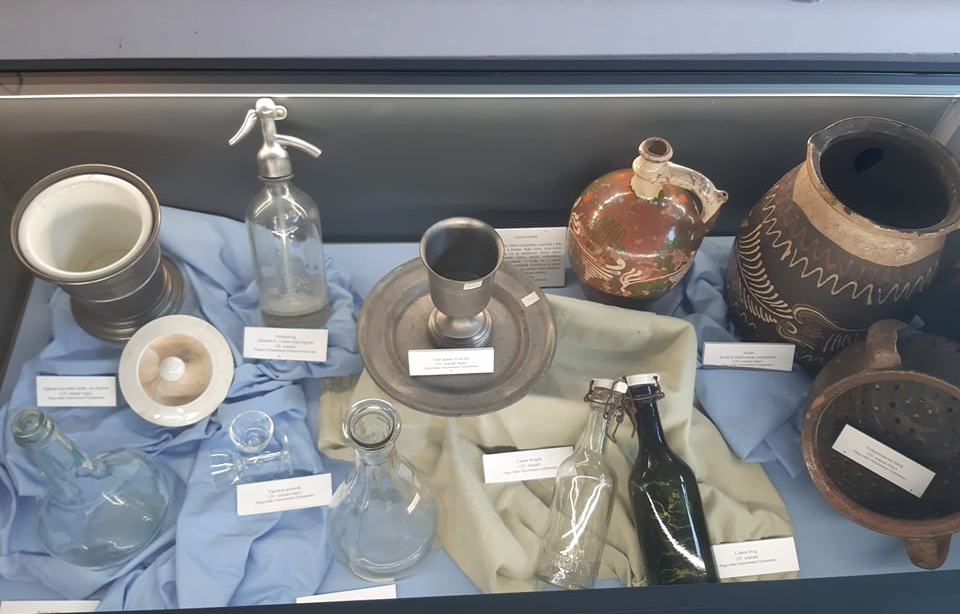
Soda bottle, porcelain ice bucket and buckle bottles (Photo: pestbuda.hu)
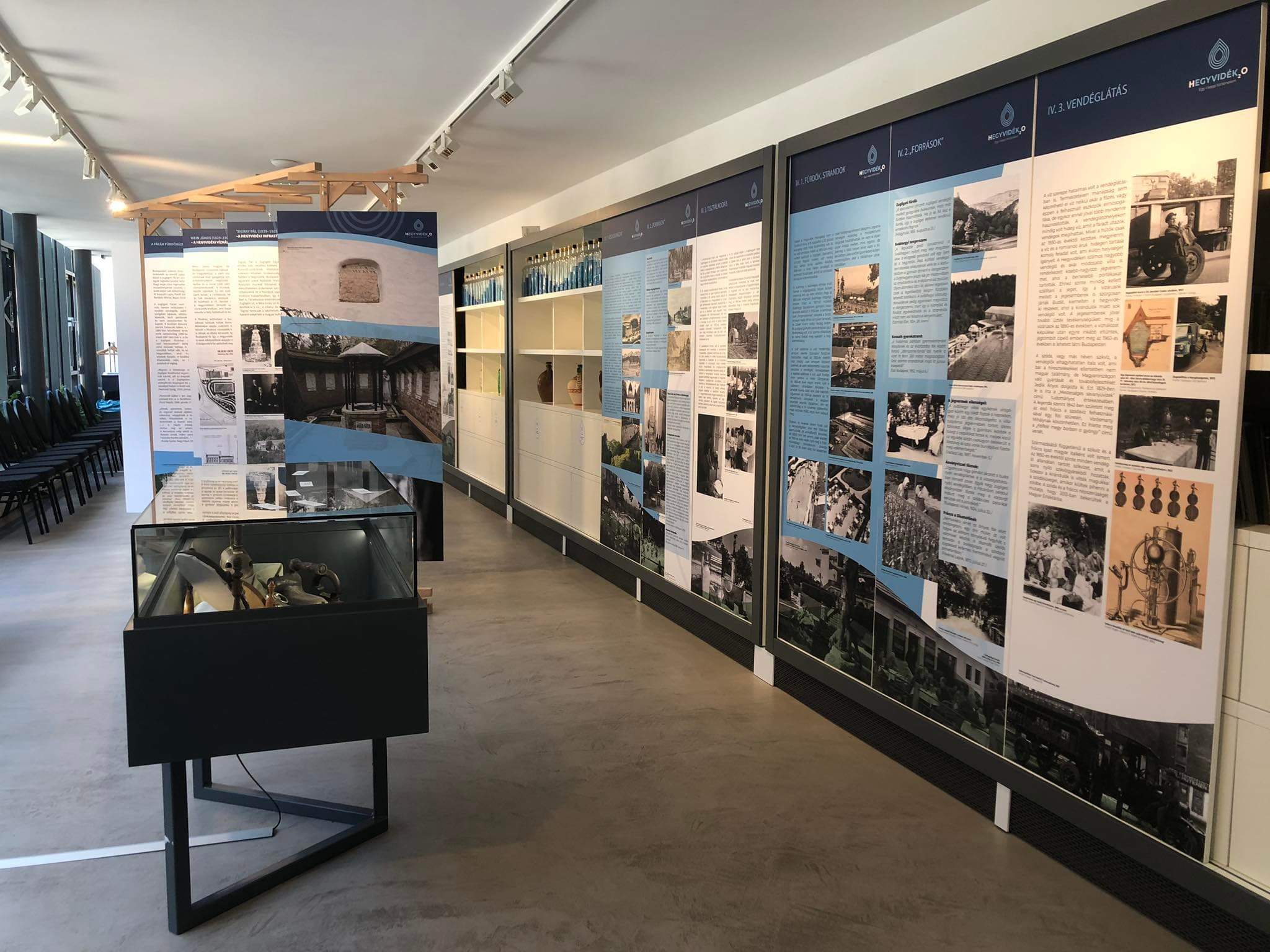
We can see many historical sources and photos in the exhibition (Photo: pestbuda.hu)
The exhibition illustrates the natural treasures of the Hegyvidék related to water, springs, streams, wells, but visitors can also read about the history of soda and ice transport in Buda, bathing (bathrooms were not widespread in the 1930s), as well as beaches and laundry days.
It is less well known that from the 19th to the mid-20th century there were several famous bathing places here, including the Svábhegy Sanatorium, the pool of the Golf Hotel and the spa house of the Fácán Restaurant.
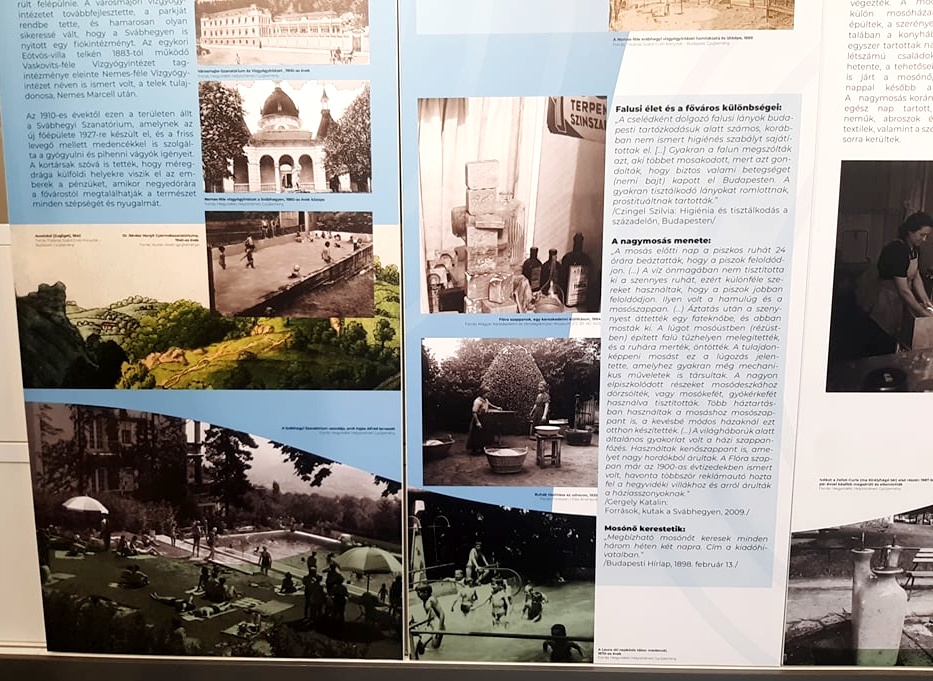
Panel showing the beaches, baths and the laundry (Photo: pestbuda.hu)
They also reminisce about the importance of water in hospitality: in the absence of a refrigerator, ice piles and ice sellers played a huge part, and soda water (sparkling water) and 'fröccs' were an unmissable drink in restaurants at the time.
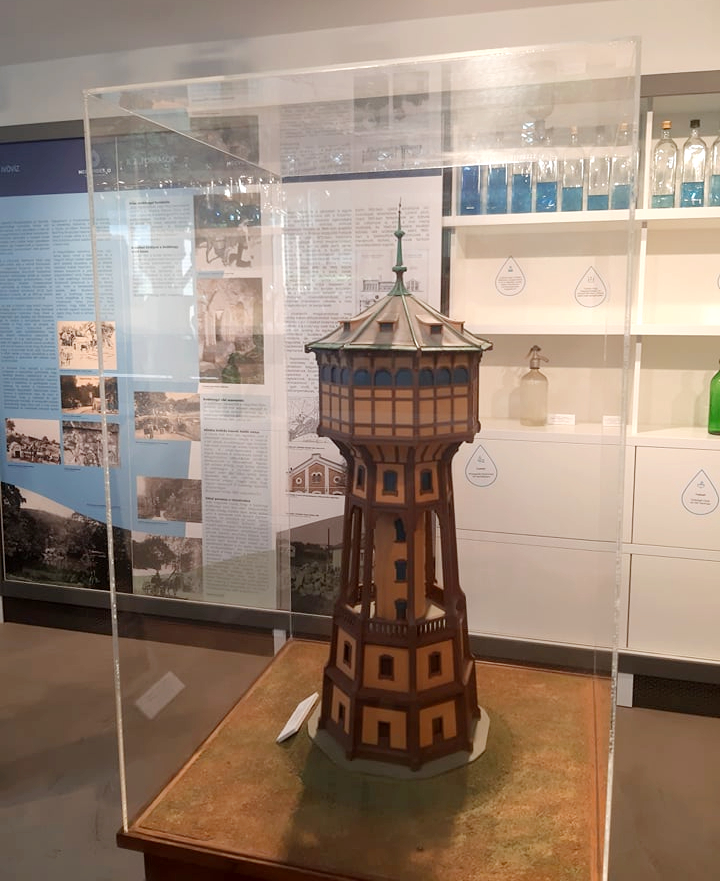
Model of the water tower in Svábhegy (Photo: pestbuda.hu)
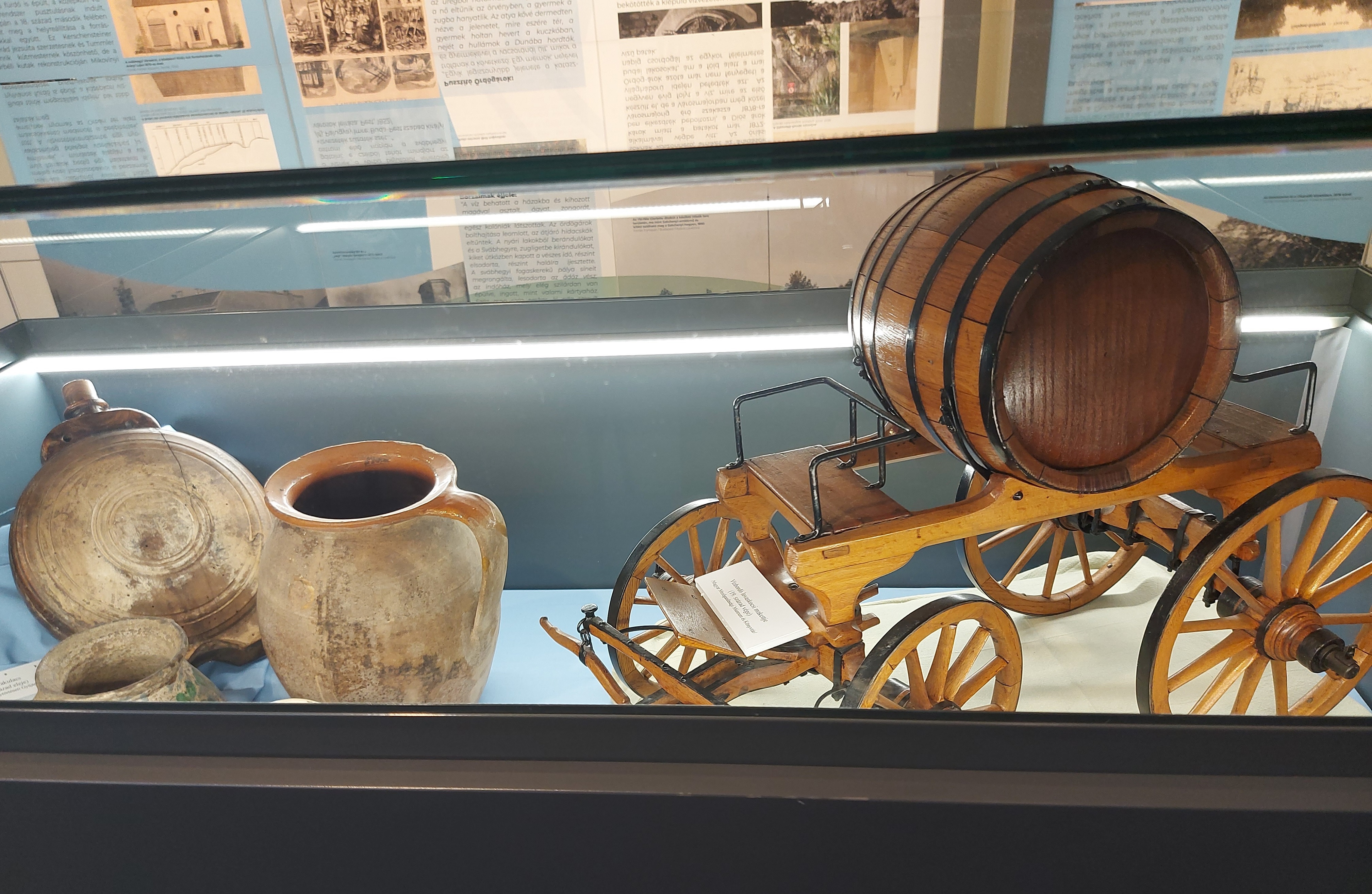
Water-carrying horse-drawn carriage (Photo: pestbuda.hu)
In addition to the pictures, material memories and valuable works of art were also exhibited. People can see the model of a water-carrying horse-drawn carriage, a scaled-down copy of the water tower on Svábhegy, medieval water vessels, ceramic water pipes, soda bottles.
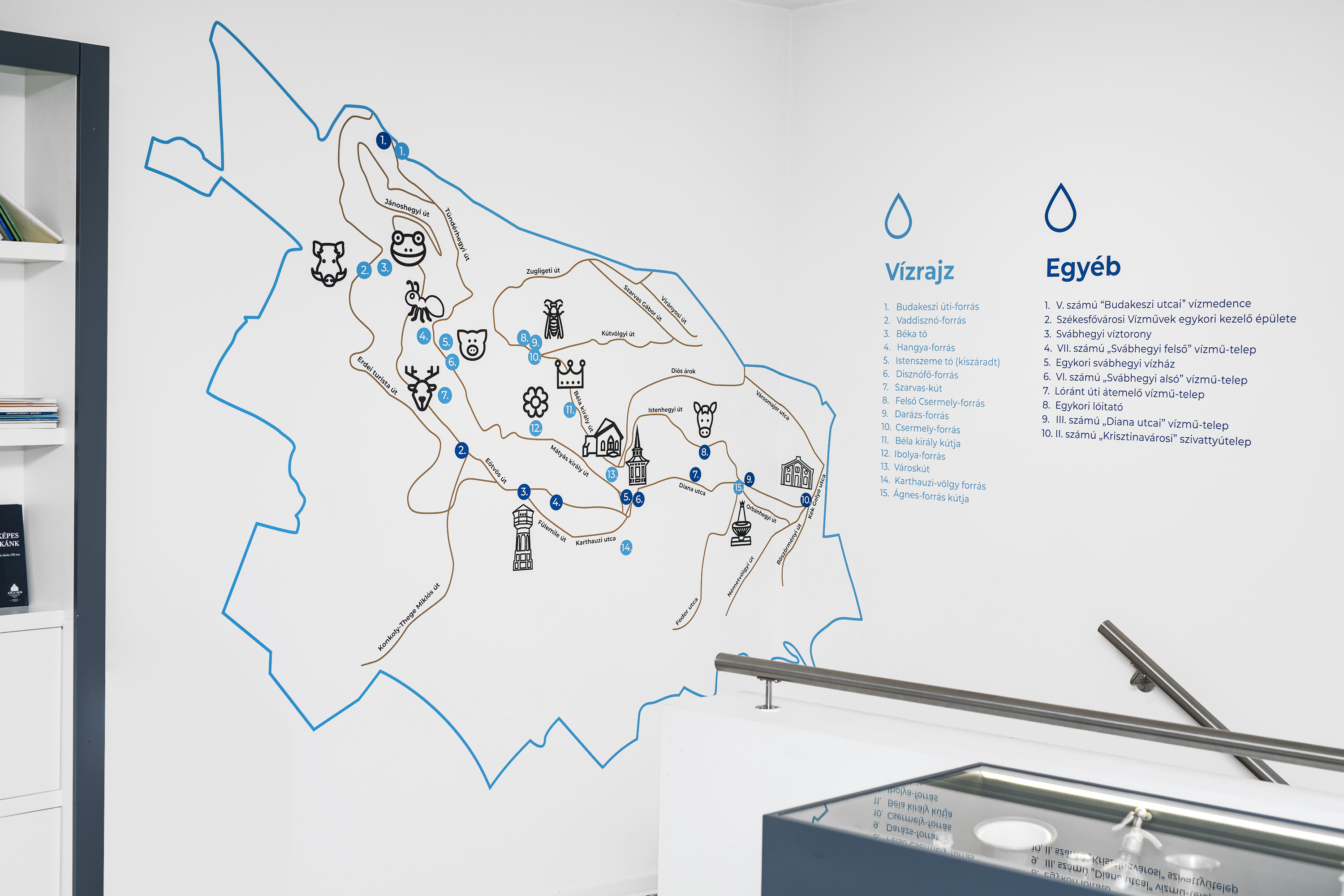
Hydrography of the Hegyvidék and buildings connected to water (Photo: pestbuda.hu)
Water is one of the most important natural values of the entire Carpathian Basin, the appreciation of which is a significant task for future generations. The exhibition also aims to draw attention to the value of water, the problems of the present and the challenges of the future. The "water drops" give visitors some useful information, for example: Did you know that 95% of drinking water in Hungary is provided by water under the surface? Did you know that the capital's first artesian well was drilled in Hegyvidék?
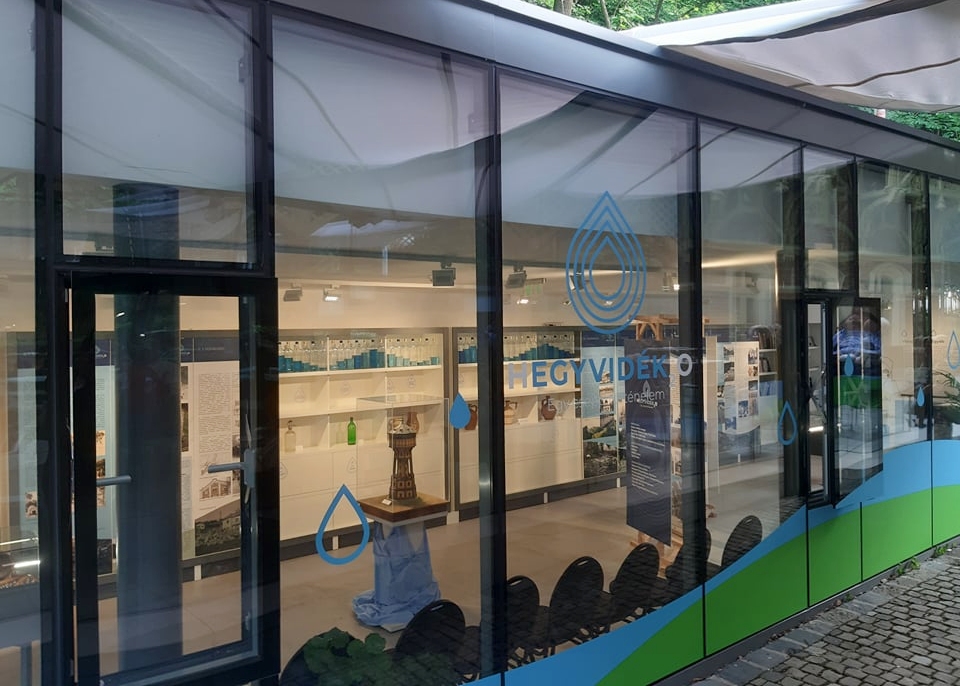
The Horse Railway - Exhibition Hall awaits the visitors (Photo: pestbuda.hu)
It is therefore worth visiting the exhibition hall, which is located next to the imposing building of the Horse Railway, decorated with green-blue wavy graphics depicting water, similar to an aquarium.
The exhibition can be visited free of charge from Wednesday to Sunday, from 10 am to 6 pm in the Hegyvidék Local History Collection (64 Zugligeti Road, Budapest 1121).
Cover photo: The Városkút (Town Fountain) in the 1880s on a contemporary postcard (Source: Hegyvidék Local History Collection)

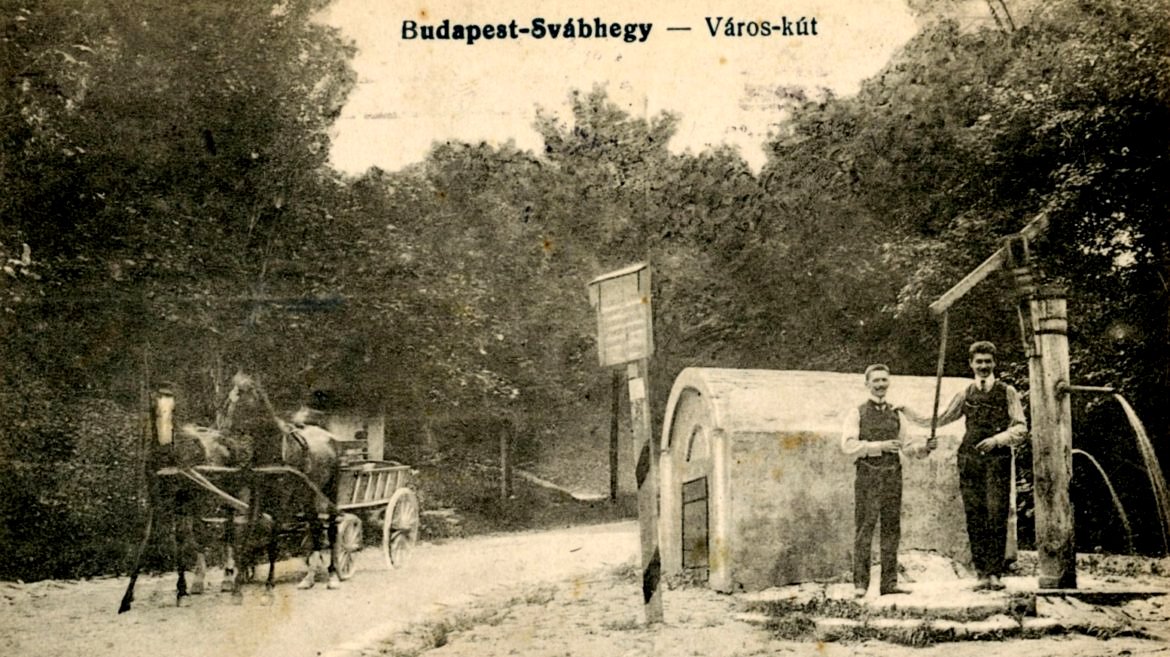




































Hozzászólások
Log in or register to comment!
Login Registration